The economic crisis seems to be largely over in 2011, but new debt concerns are sparking anxiety about a second depression. As security deals with market uncertainty, we look at the year’s milestones in events, regional and vertical markets, technologies, challenges, and drivers and differentiators.
The economic crisis seems to be largely over in 2011, but new debt concerns are sparking anxiety about a second depression. As security deals with market uncertainty, we look at the year's milestones in events, regional and vertical markets, technologies, challenges, and drivers and differentiators.
There has been no shortage of grim headlines this year. In March, the strongest recorded earthquake in Japan killed scores of people, leaving extensive destruction and a nuclear meltdown in its wake. Along with natural disaster, deliberate acts of violence took place, including the senseless Norway attacks and the Moscow airport suicide bombing. In the U.K., mass riots resulted in five deaths and widespread damage.
The past decade in security has been shaped by 9/11, with its mastermind Osama bin Laden meeting his demise in May. However, the war on terrorism is far from over, affecting a younger generation throughout the region. Across the Middle East and North Africa, Arab Spring uprisings toppled authoritarian regimes. Egypt's Prime Minister Hosni Mubarak stepped down after 30 years of power, while Libyan leader Moammar Gadhafi was killed in October. Political instability coupled with economic uncertainty has marked the past year as an eventful one.
Not all is bleak though. China hosted the successful 2011 Summer World University Games in Shenzhen, welcoming student athletes from all over the world. Projects came back online, with Asia Pacific expected to invest US$100 billion for 350 airports in the next 10 years, according to Frost & Sullivan. More new infrastructure boosted the security market, which grew in some areas due to political unrest.
M&A
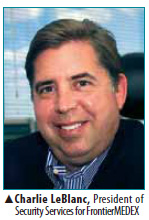 Notable consolidation and restructuring activity went on in 2011, a welcome sign after the recession. Tyco International announced a three-way split in September, with security divided into two companies: ADT and Commercial Fire and Security. “One of the business reasons for splitting up Tyco was serving the customer better,” said Charlie LeBlanc, President of Security Services for FrontierMEDEX. “One of the dangers in consolidation is you start losing the customer and understanding what they want or need.”
Notable consolidation and restructuring activity went on in 2011, a welcome sign after the recession. Tyco International announced a three-way split in September, with security divided into two companies: ADT and Commercial Fire and Security. “One of the business reasons for splitting up Tyco was serving the customer better,” said Charlie LeBlanc, President of Security Services for FrontierMEDEX. “One of the dangers in consolidation is you start losing the customer and understanding what they want or need.”
Prior to Tyco's split, ADT Security Services acquired physical security information management (PSIM) provider Proximex in April. In the same month, Verint Systems also made a PSIM buy for Rontal Engineering Applications. As security systems handle more data, there is a clear need to aggregate it in management platforms.
UTC reorganized in September, combining security and fire with HVAC provider Carrier to become UTC Climate, Controls and Security Systems. The new business will be led by new President and CEO Geraud Darnis. Siemens also restructured in September, with a new Fire Safety and Security business unit made up of Life Cycle and Enterprise segments.
Pure-play video analytics providers were either acquired or eliminated this year. Vidient was in both categories, going under in January and then being acquired by Agilence in April. In August, Keeneo's 4-D analytics was sold to Digital Barriers for $2.8 million, diminishing the ranks of stand-alone analytics providers.
Of the VCA companies still in operation, ObjectVideo sued Bosch Security Systems, Sony and Samsung Techwin for patent infringement this year. While the defendants have countersued and the legal outcome is uncertain, the lawsuits make ObjectVideo look desperate. Even if ObjectVideo wins, it has lost credibility by alienating some of the biggest names in video surveillance.
GROWTH MARKETS
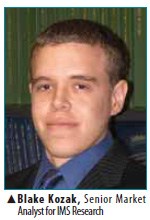 Public spending came back in 2011, with government projects and airports being among the most active vertical markets. “Due to the large number of airports across the U.S. and Europe, there is a constant need for retrofit as terminals get updated,” said Blake Kozak, Senior Market Analyst for IMS Research.
Public spending came back in 2011, with government projects and airports being among the most active vertical markets. “Due to the large number of airports across the U.S. and Europe, there is a constant need for retrofit as terminals get updated,” said Blake Kozak, Senior Market Analyst for IMS Research.
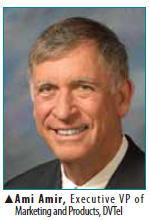 DVTel won a project for a major European airport with 1,200 cameras, along with a contract for the Mumbai airport this year. “We see new opportunities largely in emerging markets,” said Ami Amir, Executive VP of Marketing and Products, DVTel. “We had significant success in South Africa, Latin America, Russia and Asia. For us, India has much more activity than China.”
DVTel won a project for a major European airport with 1,200 cameras, along with a contract for the Mumbai airport this year. “We see new opportunities largely in emerging markets,” said Ami Amir, Executive VP of Marketing and Products, DVTel. “We had significant success in South Africa, Latin America, Russia and Asia. For us, India has much more activity than China.”
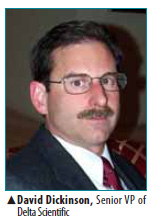 A military site in Afghanistan was one of Delta Scientific's biggest projects in 2011, using barriers and barricades to protect it from car and truck bombers, said David Dickinson, Senior VP of Delta Scientific. Its key regions were North America and the Middle East, with a focus on areas facing high risks from vehicular bombs. Many investments have been made in city surveillance, infrastructure and government buildings. “Government spending in Asia Pacific has been one of the key drivers for security revenues in 2011,” said Susan Sahayan, Research Analyst for Frost & Sullivan. “Railways, airports, highways and in-flight security are some of the key sectors within transportation driving the growth of video surveillance, access control and biometrics.”
A military site in Afghanistan was one of Delta Scientific's biggest projects in 2011, using barriers and barricades to protect it from car and truck bombers, said David Dickinson, Senior VP of Delta Scientific. Its key regions were North America and the Middle East, with a focus on areas facing high risks from vehicular bombs. Many investments have been made in city surveillance, infrastructure and government buildings. “Government spending in Asia Pacific has been one of the key drivers for security revenues in 2011,” said Susan Sahayan, Research Analyst for Frost & Sullivan. “Railways, airports, highways and in-flight security are some of the key sectors within transportation driving the growth of video surveillance, access control and biometrics.”
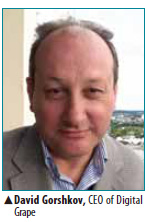
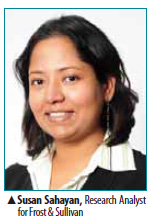 Rising fuel prices are increasing demand for public transportation. “As we see an almost negative situation in the economy, we see a positive situation in public transport,” said David Gorshkov, CEO of Digital Grape. “There's an increased need for monitoring, to meet the demands of public transport for both road and rail.”
Rising fuel prices are increasing demand for public transportation. “As we see an almost negative situation in the economy, we see a positive situation in public transport,” said David Gorshkov, CEO of Digital Grape. “There's an increased need for monitoring, to meet the demands of public transport for both road and rail.”
Threats from domestic and international terrorists around the world remain, making transportation a major security market. “In the public sector globally, we see the increase of security systems, whether they be access control or video surveillance,” Gorshkov said. “Government buildings are increasing their security, as well as educational installations.”
 The Beijing metro chose a networked access control solution with card readers to enhance access management and overall security, said Simon Siew, MD for APAC, HID Global (an Assa Abloy company).
The Beijing metro chose a networked access control solution with card readers to enhance access management and overall security, said Simon Siew, MD for APAC, HID Global (an Assa Abloy company).
Infrastructure and government were among the company's top verticals for 2011. “Geographically, we have grown in India and China in the past year, as their economic environments have rebounded faster than most countries,” Siew said.
 Corrections saw growth this year, with OnSSI installing systems at several Texas prisons. Each system includes more than 800 cameras. “OnSSI will be standardized throughout the Texas prison system's 114 facilities in the coming years, with new installations taking place as funding becomes available,” said Gadi Piran, President of OnSSI.
Corrections saw growth this year, with OnSSI installing systems at several Texas prisons. Each system includes more than 800 cameras. “OnSSI will be standardized throughout the Texas prison system's 114 facilities in the coming years, with new installations taking place as funding becomes available,” said Gadi Piran, President of OnSSI.
City surveillance also sees greater demand for scalable management. “There is increasing interest in separate control rooms to make better use of data citywide, such as transmission,” Gorshkov said. “There's interest in the consolidation of systems in various control centers, or PSIM.”